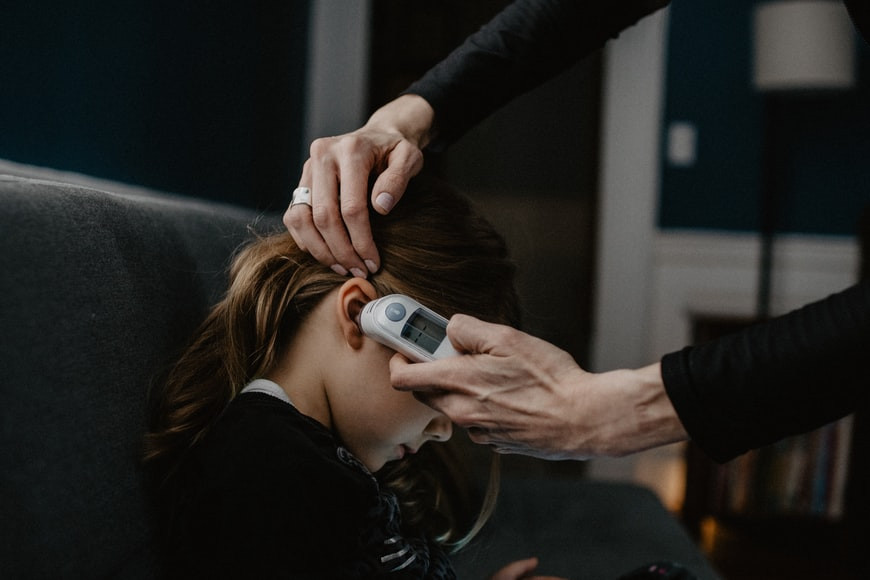Sebagian besar demam pada anak-anak tidak berbahaya, dan menjadi respons alami tubuh terhadap infeksi atau penyakit. Demam ditandai dengan peningkatan suhu tubuh yang merupakan mekanisme pertahanan tubuh saat melawan kuman atau virus yang masuk ke dalam tubuh anak.
Walaupun dinilai tidak berbahaya, demam bisa membuat anak tidak nyaman. Orang tua bisa memberikan obat untuk menurunkan demam misalnya seperti parasetamol atau ibuprofen. Perlu dicatat bahwa kedua obat penurun demam tersebut adalah dua obat berbeda. Anda harus tahu kapan sebaiknya memberikan parasetamol atau ibuprofen pada anak.
Perbedaan Parasetamol dan Ibuprofen
Parasetamol dan ibuprofen sama-sama obat yang sering digunakan untuk mengobati nyeri dan demam pada anak-anak maupun orang dewasa. Keduanya adalah bahan aktif yang juga bisa ditemukan dalam berbagai merek obat yang tersedia di pasaran.
Walaupun sama-sama meredakan nyeri dan demam, sebenarnya kedua obat berbeda. Berikut adalah beberapa perbedaannya:
Perbedaan cara kerja
Parasetamol adalah obat penurun panas (antipiretik) dan pereda nyeri (analgesik) yang bekerja dengan mengurangi produksi prostaglandin di otak, yaitu zat kimia yang memicu respons tubuh terhadap rasa sakit panas. Biasanya parasetamol diberikan pada berbagai kondisi seperti sakit kepala, sakit gigi, atau nyeri otot.
Sedangkan ibuprofen adalah obat antiinflamasi nonsteroid (NSAID) yang memiliki efek antipiretik dan analgesik. Cara kerjanya adalah dengan menghambat enzim siklooksigenasi (COX) yang bertanggung jawab atas pembentukan prostaglandin di dalam tubuh. Dengan menghambat COX, ibuprofen dapat mengurangi peradangan dan nyeri yang terkait, serta menurunkan suhu tubuh saat demam.
Baca Juga: Ada 5 Jenis Demam, Apa Perbedaannya?
Dosis dan instruksi
Parasetamol boleh diberikan pada anak-anak usia 1 bulan ke atas dengan berat badan minimal 4 kilogram atau lebih. Pemberian dosisnya berjarak 4-6 jam, dan tidak boleh diberikan lebih dari 4 kali sehari.
Dosis parasetamol anak yang dianjurkan adalah sekitar 15mg per kilogram berat badan per dosis. Penting untuk membatasi dosis parasetamol untuk mencegah risiko overdosis.
Ibuprofen boleh diberikan pada anak usia 3 bulan ke atas, dengan berat badan minimal 6 kilogram atau lebih setelah minum susu atau makan. Dosis normalnya diberikan setiap 6-8 jam dan tidak boleh diberikan lebih dari 3 hari tanpa petunjuk dokter.
Dosis oral yang disarankan untuk ibuprofen pada anak-anak berusia 3 bulan hingga 12 tahun adalah sekitar 5-10 mg per kilogram berat badan per dosis.
Baca Juga: Demam pada Bayi Baru Lahir, Apa yang Harus Dilakukan?
Kapan Harus Memberikan Parasetamol atau Ibuprofen?
Pemilihan antara parasetamol dan ibuprofen untuk mengobati anak tergantung pada beberapa faktor, seperti usia anak, kondisi kesehatan anak, riwayat medis, dan gejala yang dialami. Berikut adalah beberapa hal yang perlu dipertimbangkan:
Usia anak
Parasetamol biasanya menjadi pilihan utama yang aman diberikan pada bayi di bawah usia 6 bulan. Sedangkan penggunaan ibuprofen di bawah usia tersebut sebaiknya didiskusikan terlebih dahulu dengan dokter.
Riwayat alergi terhadap NSAID
Apabila anak memiliki riwayat alergi atau reaksi buruk terhadap ibuprofen atau obat NSAID lainnya, lebih baik memberikan parasetamol sebagai alternatif penurun demam dan pereda nyeri.
Riwayat masalah pencernaan
Parasetamol cenderung lebih ramah bagi anak yang memiliki riwayat masalah pencernaan, gangguan lambung atau masalah perdarahan gastrointestinal. Ibuprofen dapat menyebabkan iritasi pada lambung dan saluran pencernaan, sehingga harus diberikan dengan hati-hati dan lebih bijak.
Riwayat asma
Anak-anak yang memiliki riwayat asma atau masalah pernapasan lainnya lebih baik diberikan parasetamol. Ibuprofen dapat menyebabkan gejala asma lebih buruk pada beberapa anak dengan riwayat asma.
Pascavaksinasi
Parasetamol lebih sering direkomendasikan daripada ibuprofen untuk diberikan setelah anak menerima vaksinasi untuk mengurangi ketidaknyamanan dan efek samping yang mungkin timbul. Selain itu, parasetamol juga bisa diberikan walau anak belum menyusu atau makan.
Meskipun parasetamol lebih disukai dalam beberapa situasi seperti yang disebutkan di atas, setiap keputusan pengobatan sebaiknya didiskusikan dengan dokter. Yang tak kalah penting, selalu ikuti dosis yang tepat dan petunjuk penggunaan obat yang diberikan oleh dokter atau yang tertera di kemasan obat.
Apabila gejala anak tidak membaik setelah penggunaan obat, segera hubungi dokter atau manfaatkan layanan konsultasi kesehatan dengan mengunduh aplikasi Ai Care melalui App Store atau Play Store.
Mau tahu informasi seputar kehamilan, menyusui, kesehatan wanita dan anak-anak? Cek di sini, ya!
- dr. Monica Salim
NPS Medicinewise (2022). Treating my child’s pain or fever—paracetamol or ibuprofen?. Available from: https://www.nps.org.au/consumers/treating-my-child-s-pain-or-fever-paracetamol-or-ibuprofen#find-out-more
Kids Health (2022). Fever (High Temperature) In Kids. Available from: https://kidshealth.org/en/parents/fever.html
Stanford Medicine. Fever in Children. Available from: https://www.stanfordchildrens.org/en/topic/default?id=fever-in-children-90-P02512
WebMD. Ibuprofen: Uses, Side Effects, and More. Available from: https://www.webmd.com/drugs/2/drug-5166-9368/ibuprofen-oral/ibuprofen-oral/details
Drugs (2023). Paracetamol. Available from: https://www.drugs.com/paracetamol.html
NHS UK (2022). About ibuprofen for children. Available from: https://www.nhs.uk/medicines/ibuprofen-for-children/about-ibuprofen-for-children/











